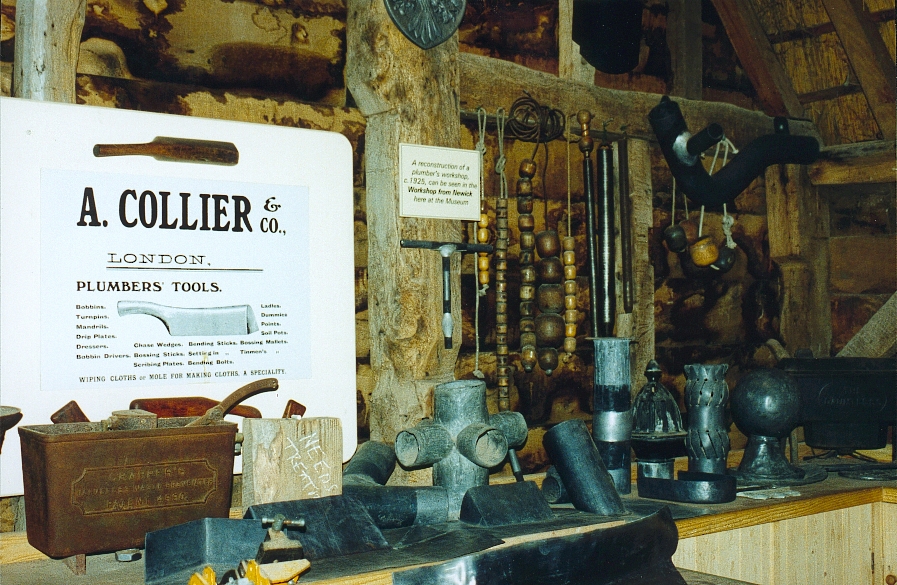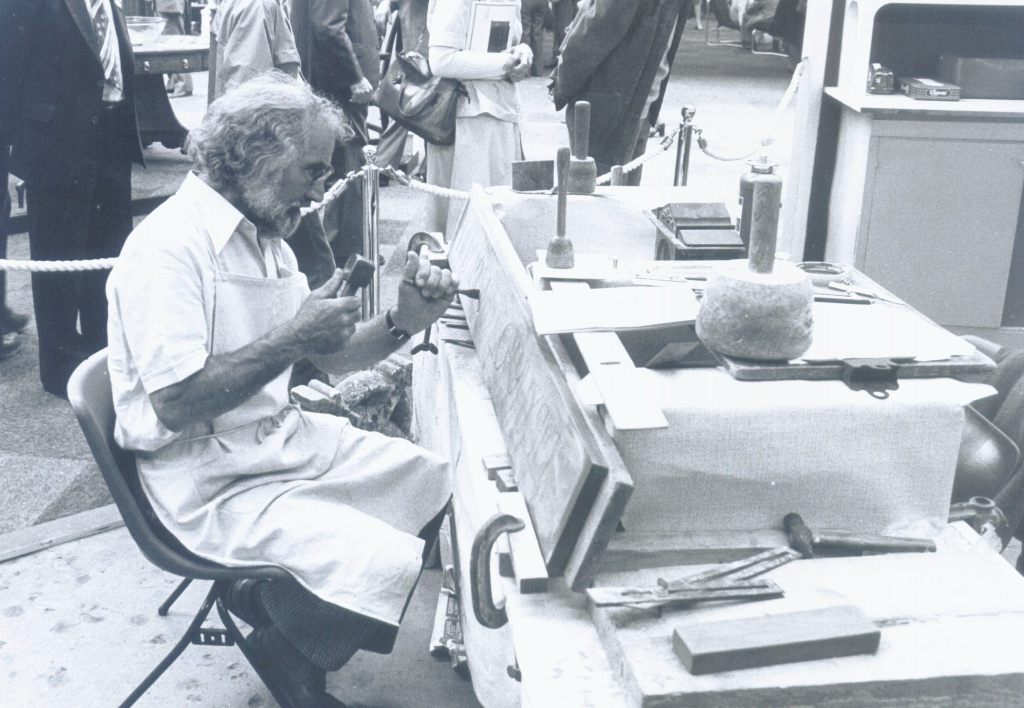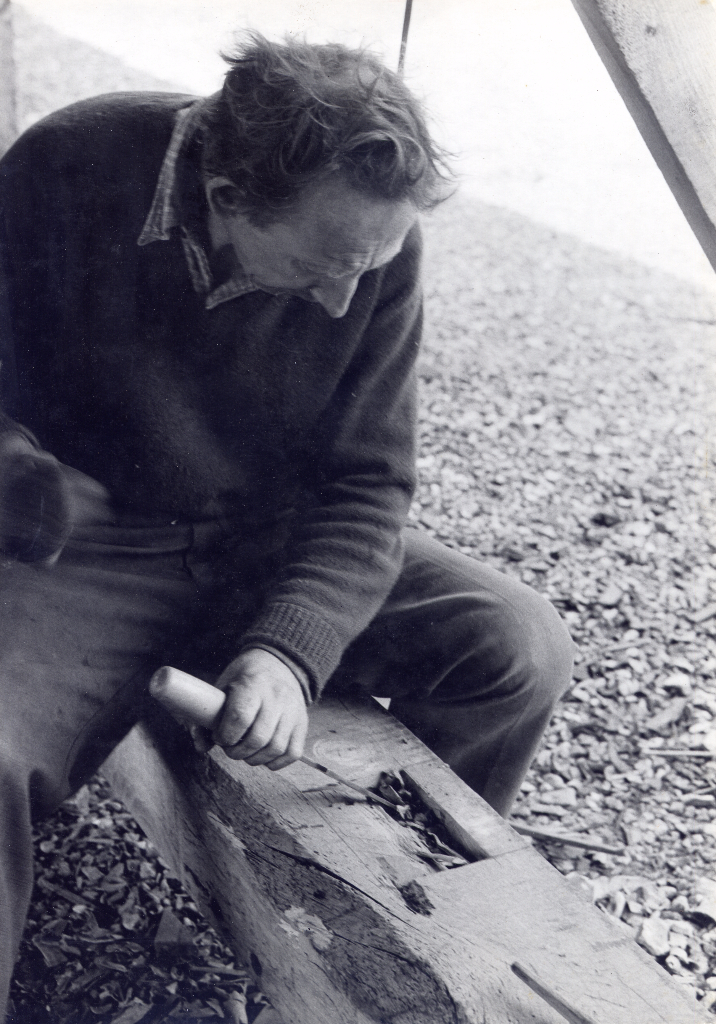
How were our exhibit buildings constructed?
An often asked question from our visitors and one that this section of our collections helps to answer, and without the preservation of such items, the answer would eventually become lost.
Nowadays the majority of tools seem to come either with an electrical lead or battery pack and often profess to carry out a multitude of tasks rather than one.
Very little however is a completely new invention, so searching through these artefacts will bring the visitor into contact with a specific tool for whatever task could be imagined.
Tools which are often works of art in themselves – look closely at a carpenters plane and imagine the hours of work and skill which went into its production compared to the mass injection of plastic which now seems to be the norm; and this only to produce a tool, a starting point for the craftsman to begin his construction work.
Tools and equipment were not simply throw-away items which enabled the unskilled to do anything they wished. They were things of value. Not only monetary in themselves, but a source of a craftsman’s income and as such, objects to be cared for and to be understood, studied in order to be used correctly to produce works which are often sadly missing from today’s world.
Share
Building Trade Collections
Carpentry
As may well be expected in a museum whose original raison d’etre was the preservation of timber-framed buildings, we have attracted a huge number of carpentry and joinery tools since we opened to the public in 1970. These comprise small numbers or even single donated items, to full carpenters’ chests and even complete workshops. For example, at the last count we have listed in our catalogue some 450 planes.
The carpentry collections are generally organised according to tool type, so that all planes are together, all augers, chisels and so on, The exception to this is where we have received larger donations such as the carpenters chests and workshop contents, where we keep the entire group of tools together in order to retain as much of its original relevance as possible.
There is obviously some cross-over with other similar subject matter such as coopering and wheelwrighting although these activities are organised separately.
Groups of items within this subject include:
Axes
A good collection and variety of carpenters axes (as opposed to felling and trimming axes) largely spread between individuals donations and carpenters boxes.
Adzes
A good collection and variety of adzes used for curved and finishing work.
Augers
A wide collection and variety of augers including taper augers, twist augers, shell augers and spiral augers.
Chisels & Gouges
A very large number of chisels and gouges including firmer, paring, mortice, swan-necked, bruzz, carving and turning.
Planes
A huge collection of planes including Bismarck, Chinese, fillister, plough, grooving, hollow, jack, moulding, rebate, rounder, router, shoulder, smoothing and trying.
Grindstones
These are the larger, free-standing grindstones of which we have a good representative collection of the basic types once found in most rural workshops, farmyards or even cottage gardens, however we currently have no mower or reaper knife sharpening machines or grindstone attachments as yet.
Plumbing
Tools
The Museum together with the Worshipful Company of Plumbers have amassed this large collection of plumbing and leadworking tools. The enthusiasm with which our early collecting took place does mean that we have some unnecessary duplications, however the items we have certainly amount to a rare and unusual, comprehensive collection. Originally named ‘The Plumbing Museum’ this important group of material now forms an integral part of the wider artefact collections.
With such complete displays in Court Barn, Newick workshop and in the Gridshell Artefact Store, the museum’s plumbing collections are widely accessible to all visitors in a variety of ways.
Sanitary Ware
A relatively small but notable collection which includes some very rare lavatorial survivors – earth closets and water closets such as ‘Shanks’ Patent Levern Syphonic Closet’ and ‘George Jennings Closet of the Century’!
Stonemasonry
Stone working tools are an important subject grouping within the collections, but have until recently been relatively under-represented. Particularly noteworthy individual items include a horse hoof rasp which despite its intended use was actually used by a stonemason for rubbing down masonry, and a beautiful beech burr stonemason’s mallet with four incredibly deep pits worn into the head from many years work by the craftsman’s hands.
In 2008 however, we were fortunate to be given the contents of the recently deceased Mr Little’s workshop from Englefield Green in Surrey. Mr Little was a notable letter carver and monumental mason and besides the large group of tools and materials we collected, we were also able to acquire many of his sketches, drawings and templates from which he then produced his finished work.
Groups of items within this subject include:
Monuments
We have a number of completed and part completed monumental stonework from the workshops of Mr Little, together with numerous sketches and technical plans from which he worked. Also a number of monuments upon which Mr Little was making additions or alterations.
Tools
By far the majority of stonemasons tools in the collection come from the workshop of Mr Little and whilst providing a generally good representation of masons tools in general, they also include a number of personal or adapted items, particular to the craftsman himself.
Thatching
The Museum holds a comprehensive range of thatching tools from yokes, used to carry the reed and straw, rakes and leggets to arrange the covering, slashers to trim and the vicious-looking thatcher’s needles to secure it to the roof.
The use of similar terms for different items in the thatching collection is quite confusing (thatch hooks/thatching hooks/thatcher’s hooks/thatcher’s iron hook are all very different things), so we have tried to simplify things by using a definitive term for each item.
However we have also retained the original names with the information we hold on each item as it is important to keep such names originally recorded in case these were local terms for the items. Local terms and names have also been recorded where known.
- Eaves hooks (thatcher’s hook/ovis knife)
- Iron thatching hooks (crooks/hooks/spikes/nails)
- Kneepads
- Ladders
- Leggats (leggett/dresser/bat/beetle)
- Needles
- Pins
- Plastic thatching spar
- Spar hooks (spar makers handbill)
- Swop sticks
- Thatcher’s rakes (long straw rake/thatching rake/comb/sidecomb)
- Thatching trough
- Wimbles (whimble/whimbrel/womble/hay bond twister/scud winder)
- Yokes (thatcher’s dog/yealm holder/jack)
- Thatcher’s rakes
The thatching collection comprises many single item donations, three part inventories and one well provenanced large inventory, complete with chest. It represents combed wheat thatching, long straw thatching, water reed thatching and rick thatching.
There are great similarities between the tools used for long straw thatching and rick thatching so it is not possible to define which tools relate to which activity. It seems likely that many of the yokes, rakes and wimbles in the collection were used for rick thatching due to their quantity.
Photo Gallery
Captions
1. Carpenter Philip Walker, 2. Grindstones, 3&4. Court Barn plumber’s workshop from Newick, 5. Stonemasonry lewiss, 6. Stonemason Mr Little, 7. Thatching Gonville Cottage, 8. Woodworking tools, 9. Carpentry
















